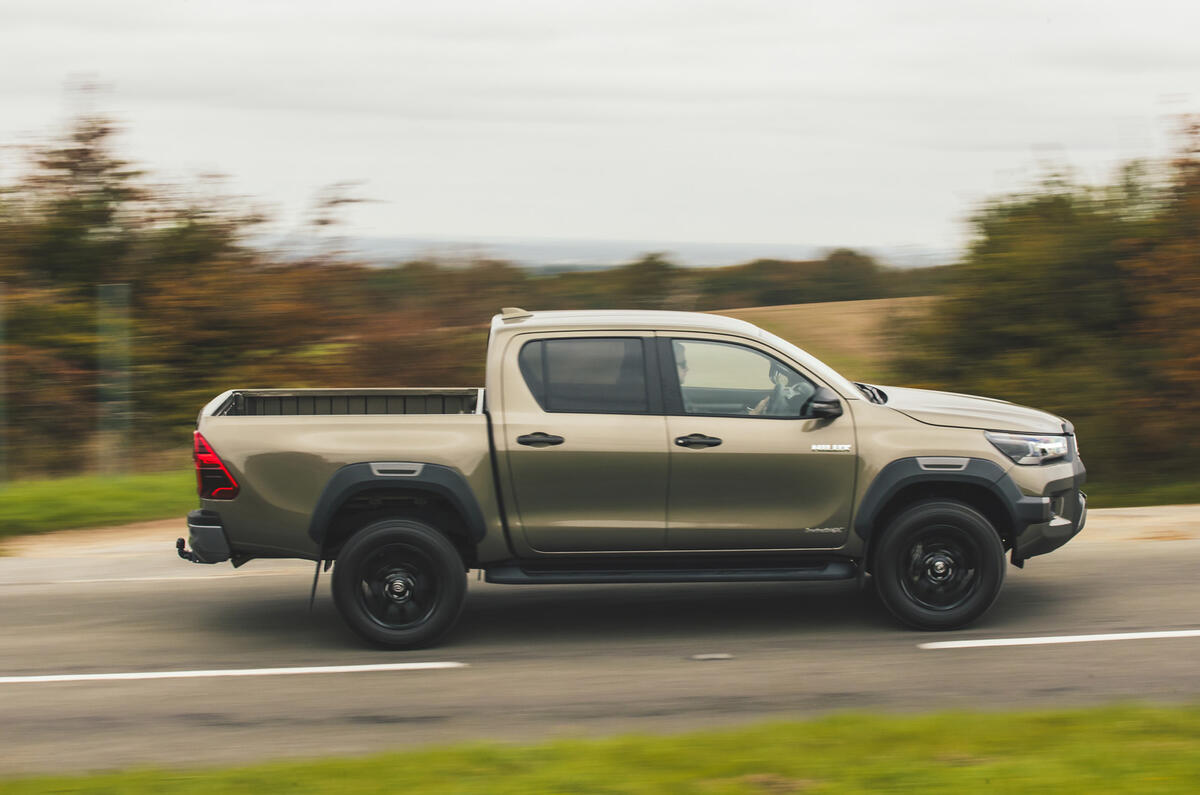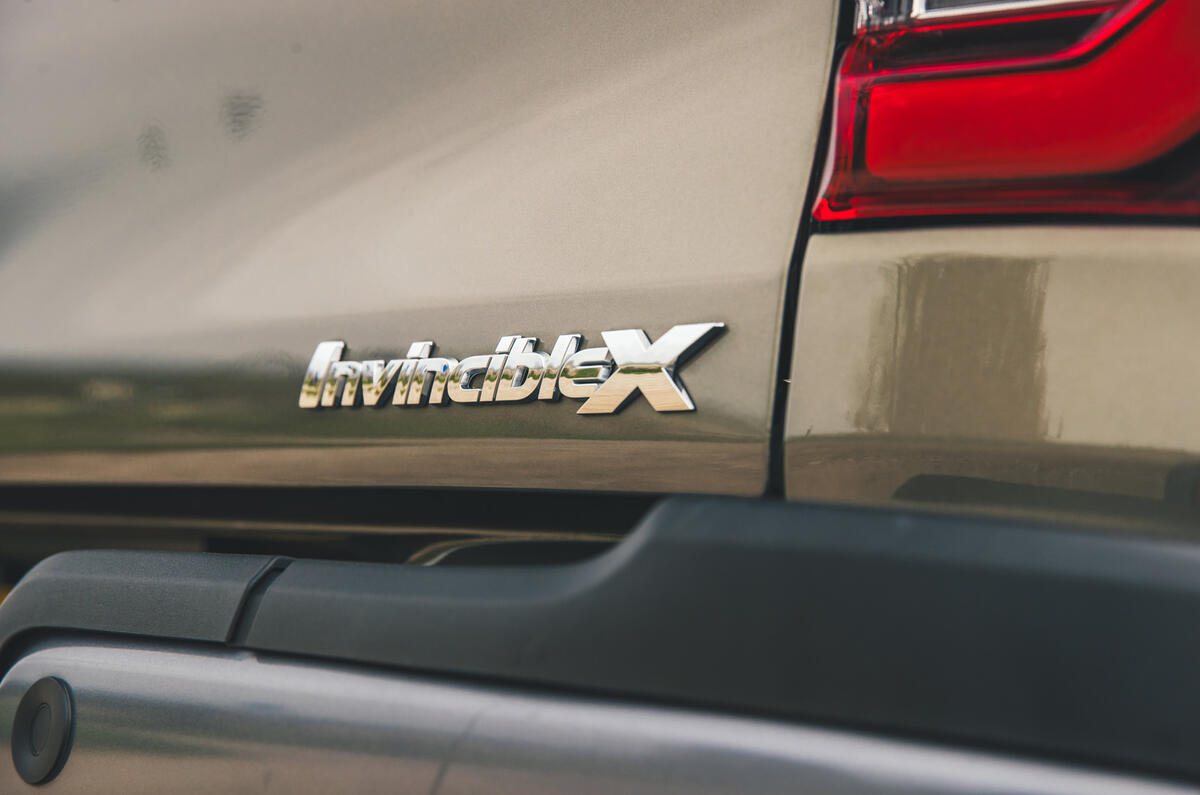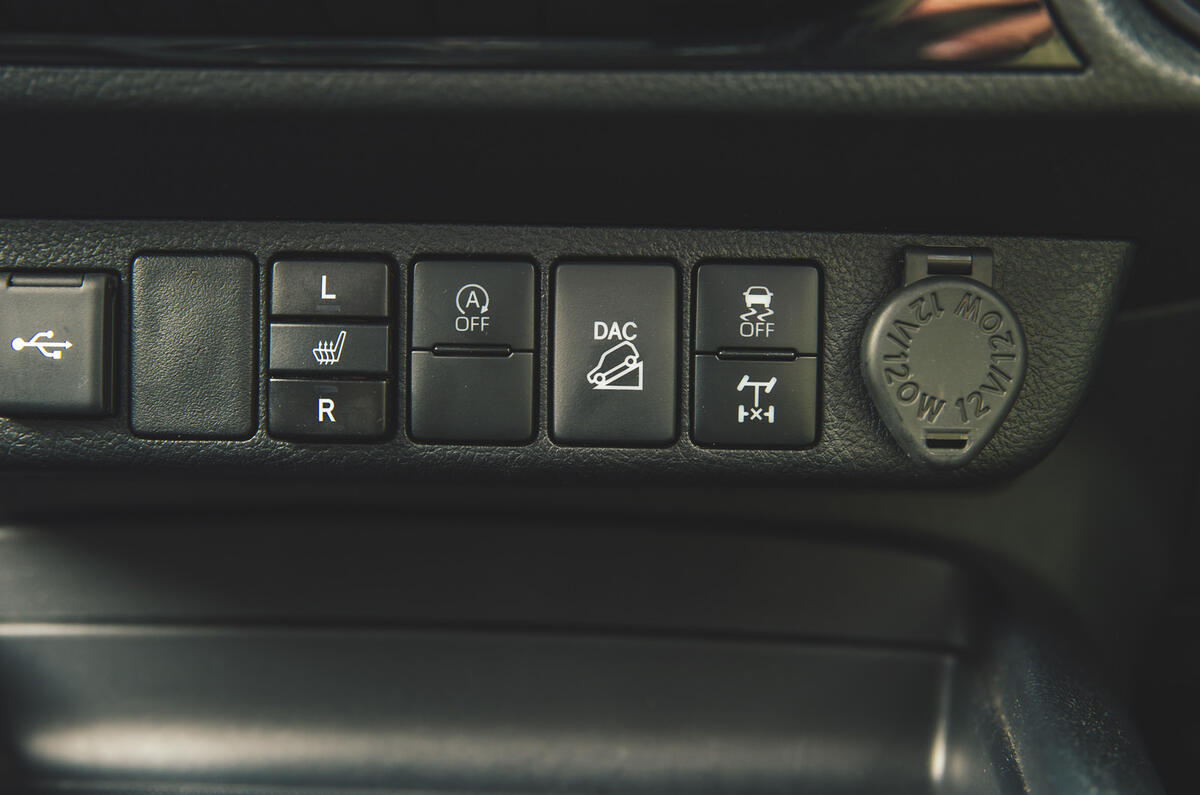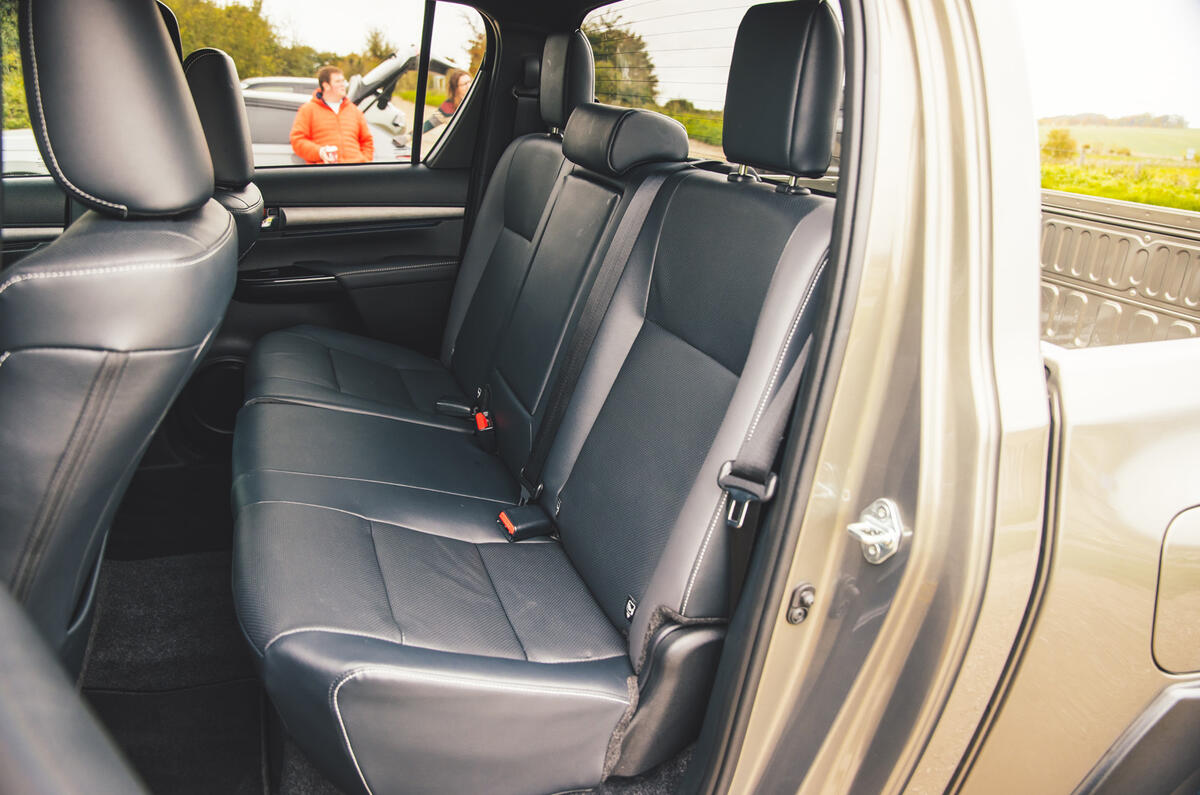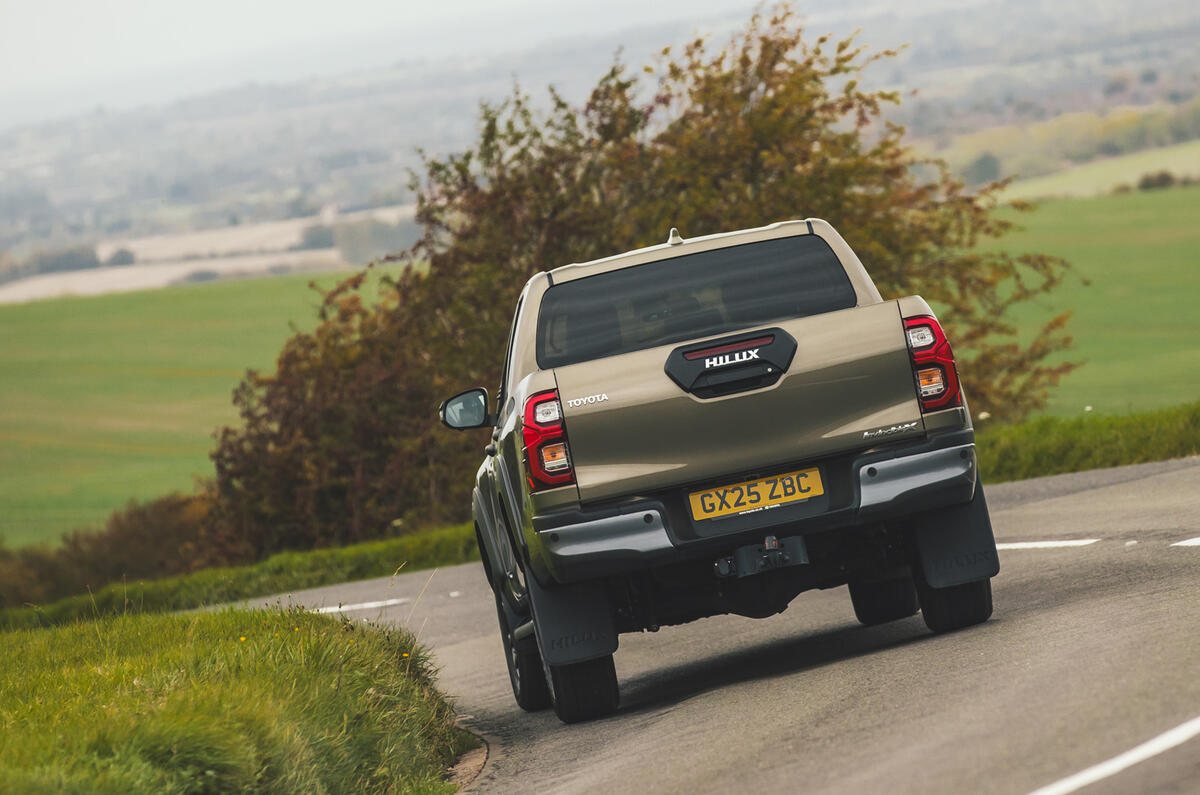In all specifications, the Hilux is likeably straightforward to drive, and its transmission has manual controls, albeit buttons and knobs that need a moment or two to actuate the changes you have in mind but which get there soon enough.
Yet launching from rest in rear-drive mode, on dry asphalt and with the stability control switched off, produced precisely the same 0-60mph time as doing so with the forward driveshafts engaged and the electronics activated.
Proof, as if it were needed, that a four-cylinder diesel isn’t likely to excite you too much with its sheer speed when powering a two-and-a-bit-tonne pick-up.
The roll-on acceleration is pretty one-paced, too. The 2.8-litre engine doesn’t need to be revved to produce useful force; it’s a lot noisier and a little clattery at anything above 2500rpm than when operating in its comfort zone, while the gearbox doesn’t work its way through the intermediate ratios with particular keenness.
Upshifts have a slurred, rubbery feel as they’re delivered, and some ratios feel as if they have only half-engaged to begin with, only for the engine revs to drop again a second or two later.
Torque is what this powertrain is all about, as with any utility vehicle intended to haul, climb, crawl and tow.
The engine makes a great deal of it, and in a particularly accessible way. The squishy feel of that transmission’s engagement would be ideal when managing a heavy trailer, for instance, or closely controlling your momentum when climbing a steep, rocky incline.
The Hilux’s torque-converter automatic really feels like it’s multiplying the engine’s low-rev muscle on part-throttle, as it winds up and then sets loose that little bit more than was asked for by your right foot.
In mild hybrid guise, the total power and torque outputs are the same as from the conventional 2.8-litre diesel, and its 10.7sec 0-62mph sprint time is identical too. And the promised gains in throttle response are subtle at best.
Performance very much resembling that of the conventional diesel means there’s plenty of low-end torque to handle the Hilux’s 2250kg kerb weight easily.
But the engine sounds awfully clattery and agricultural under heavier acceleration and the automatic transmission feels similarly old-school.
While things start to settle down at a cruise, the Ford Ranger and Volkswagen Amarok siblings are more refined, with their smoother 10-speed automatic transmission.





